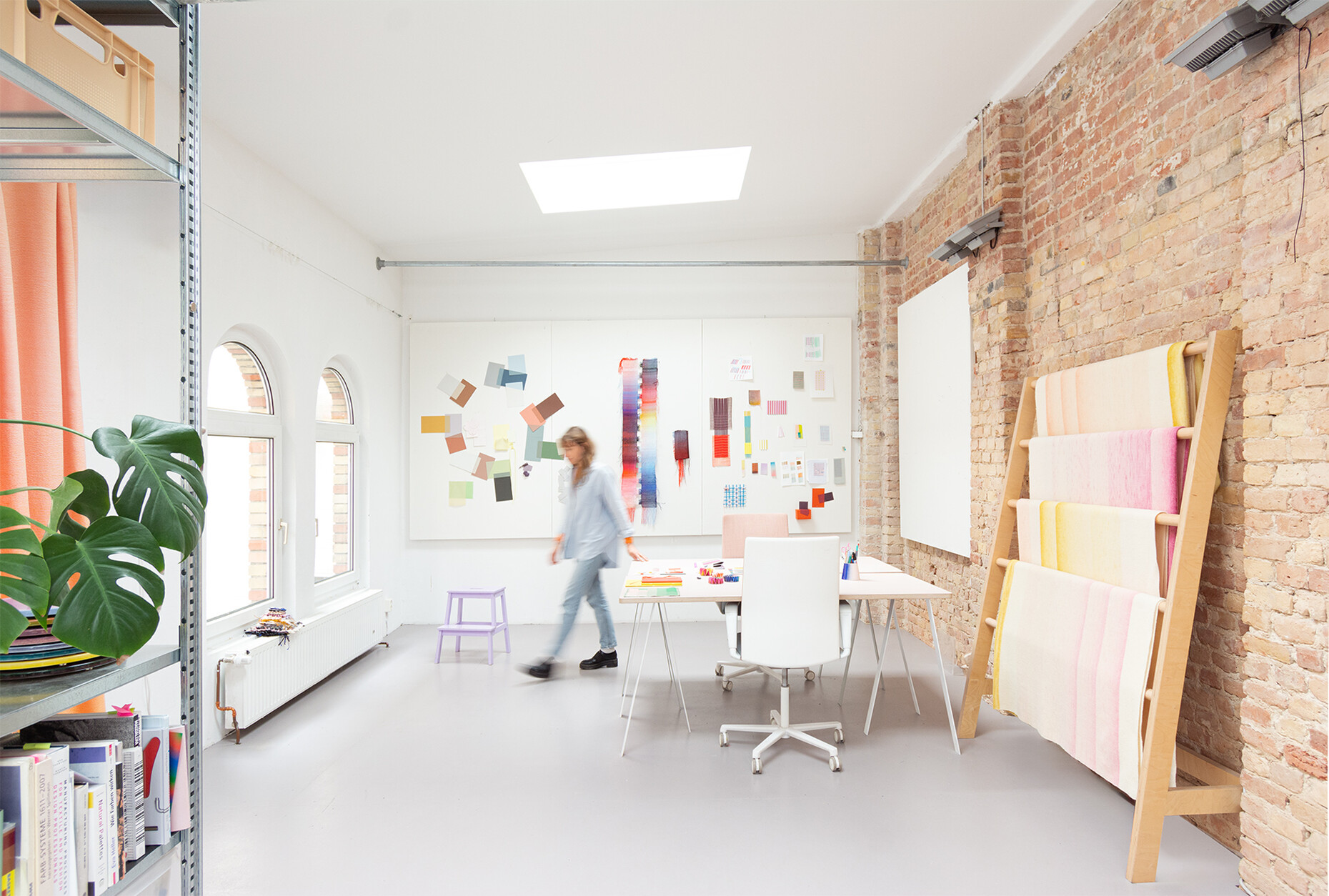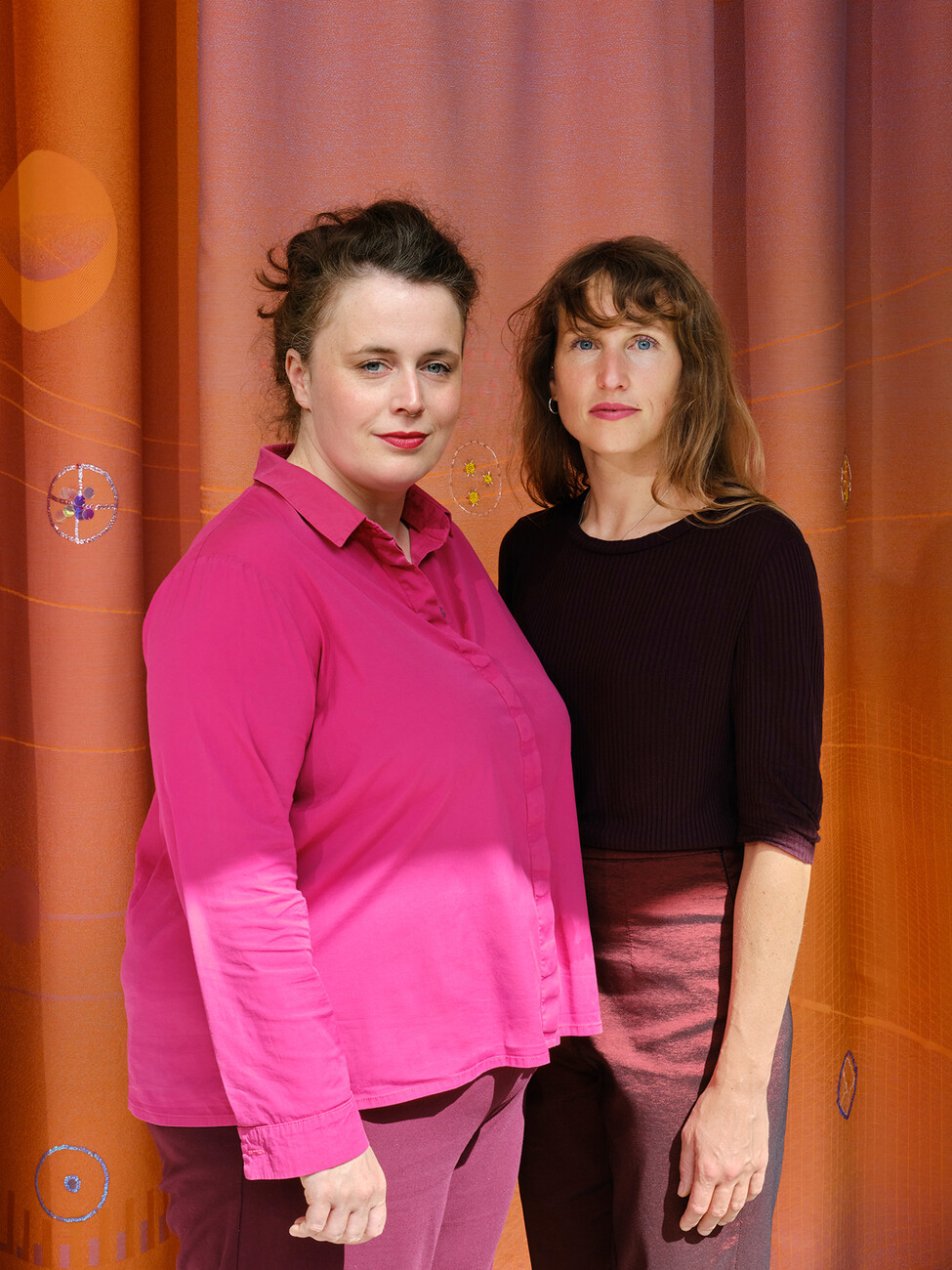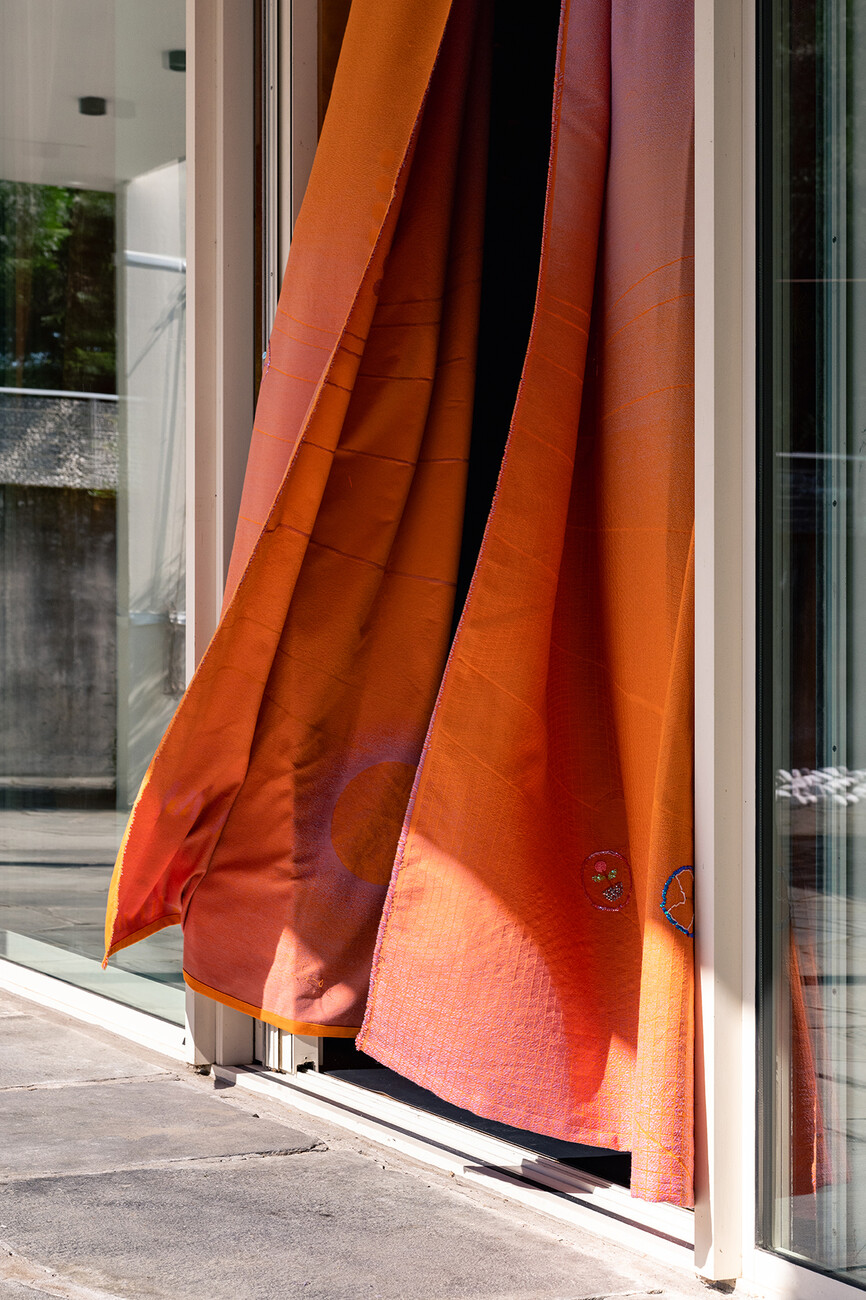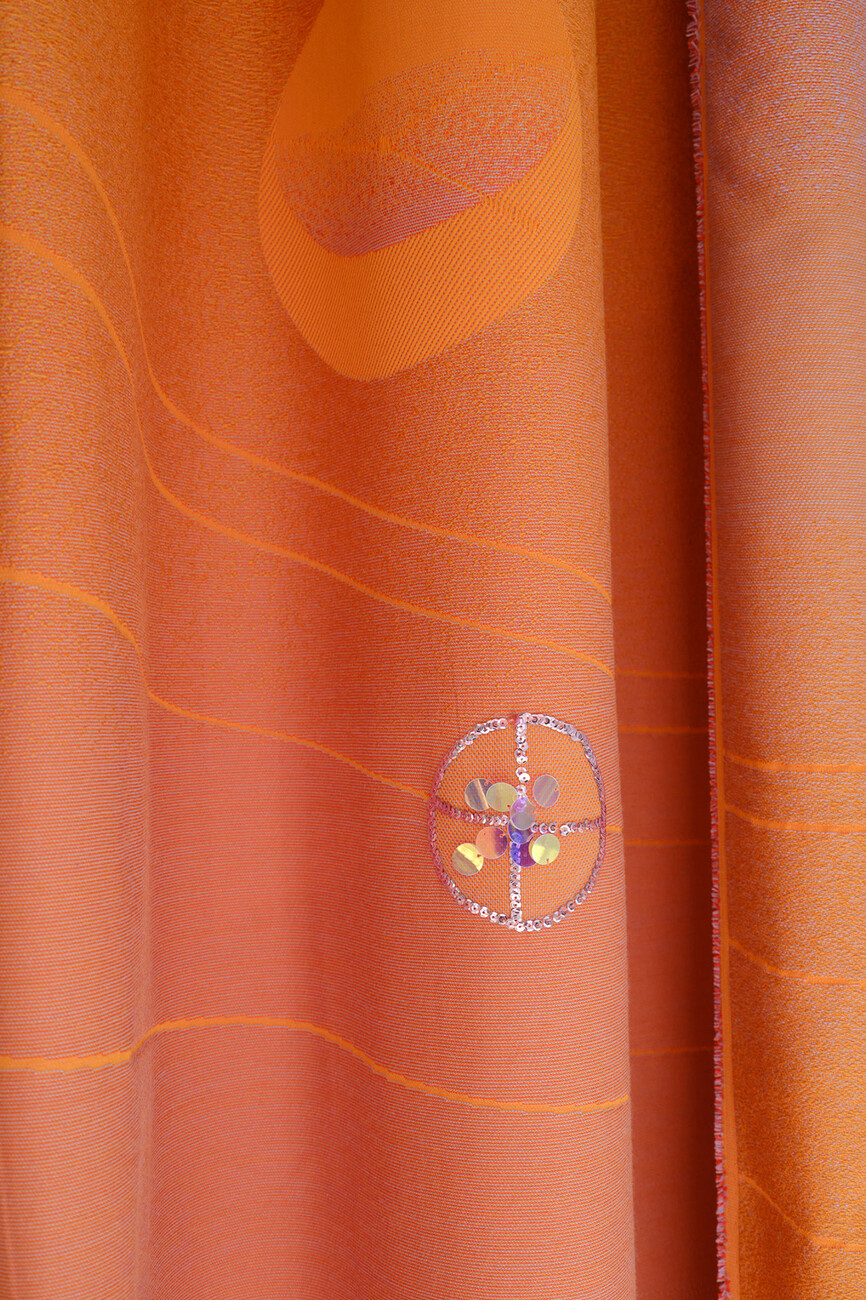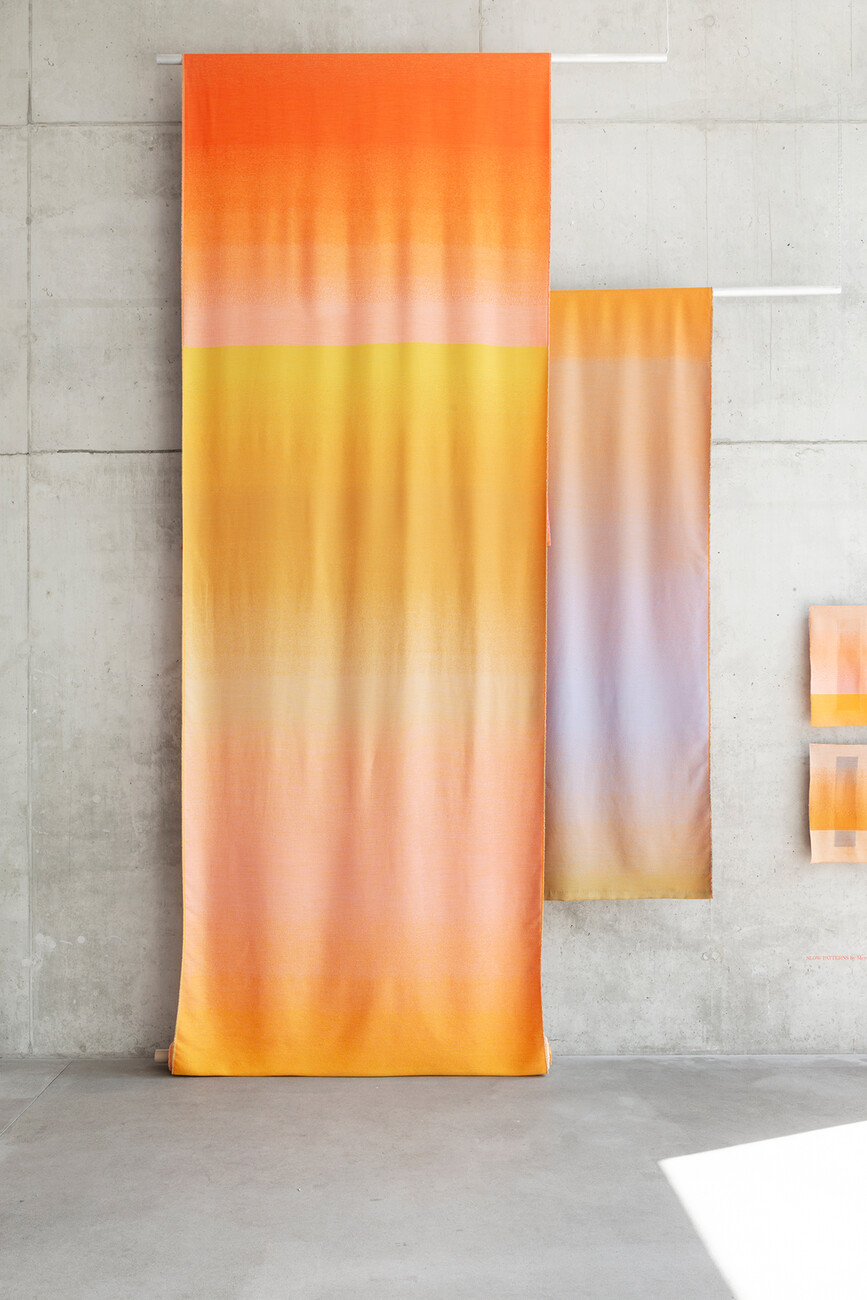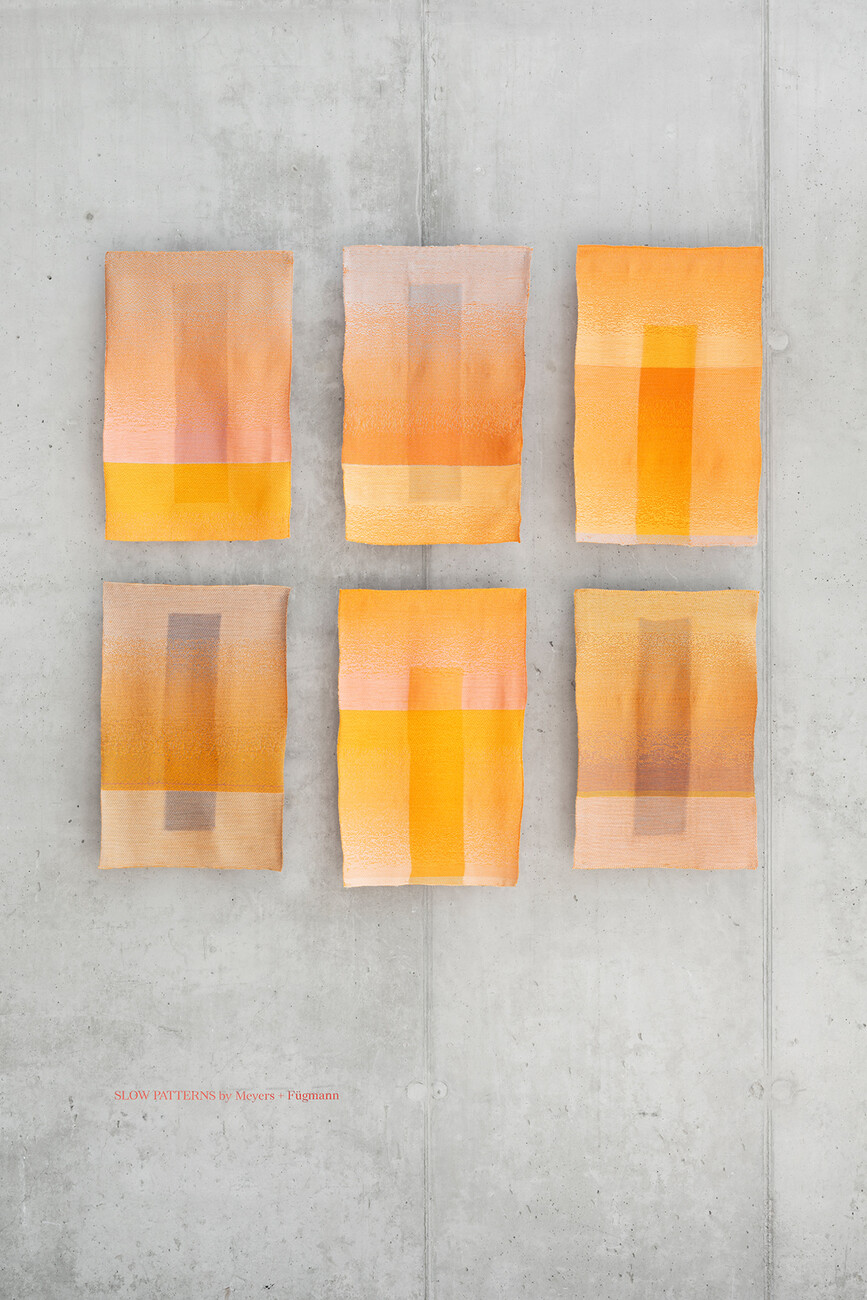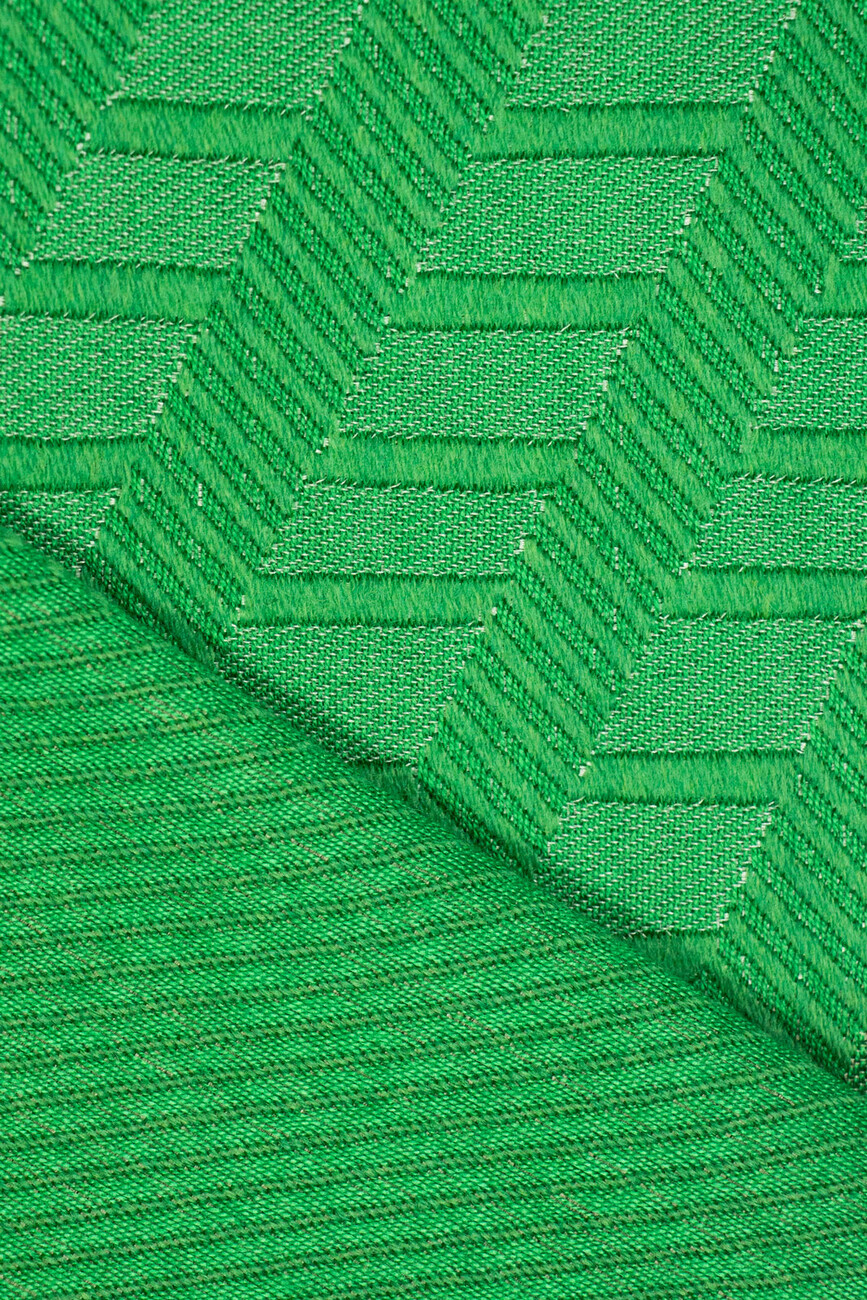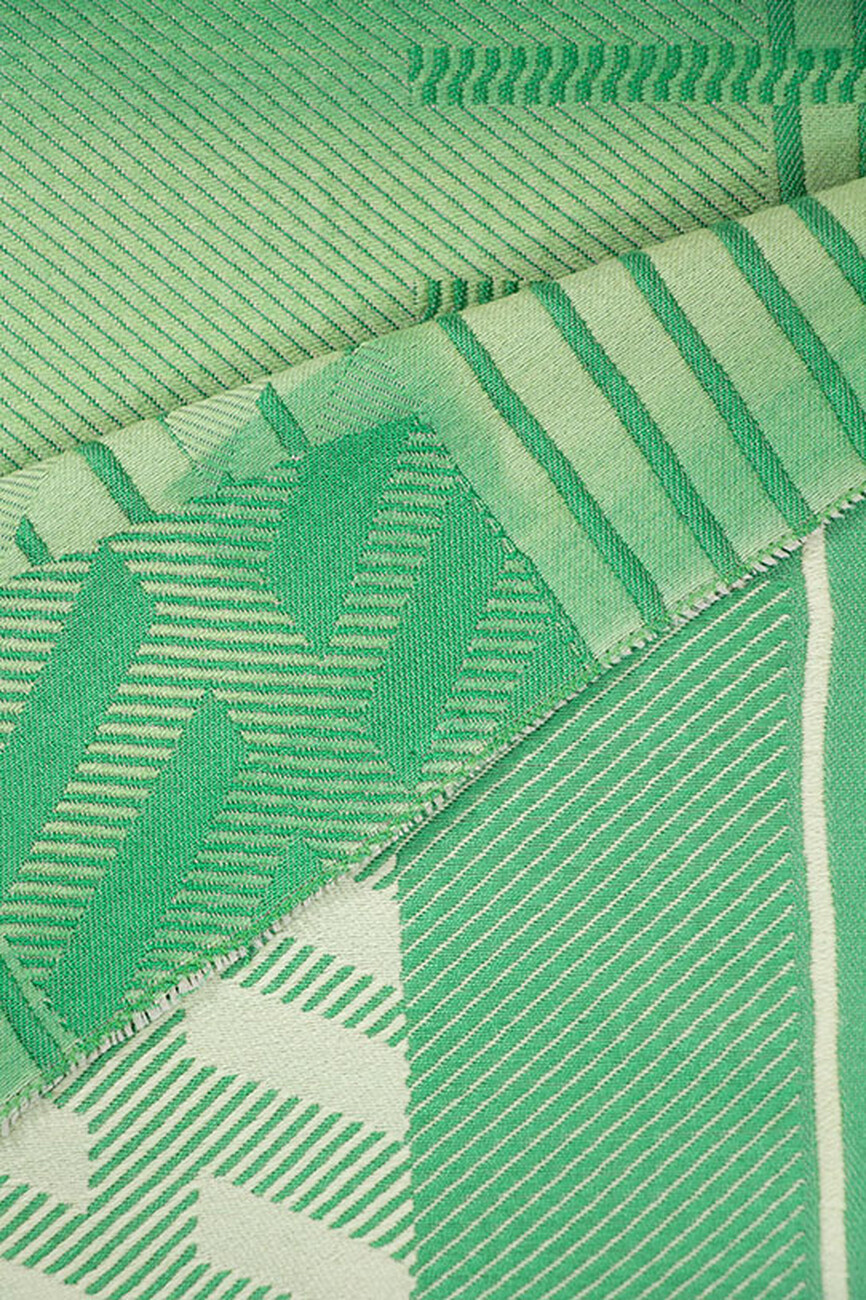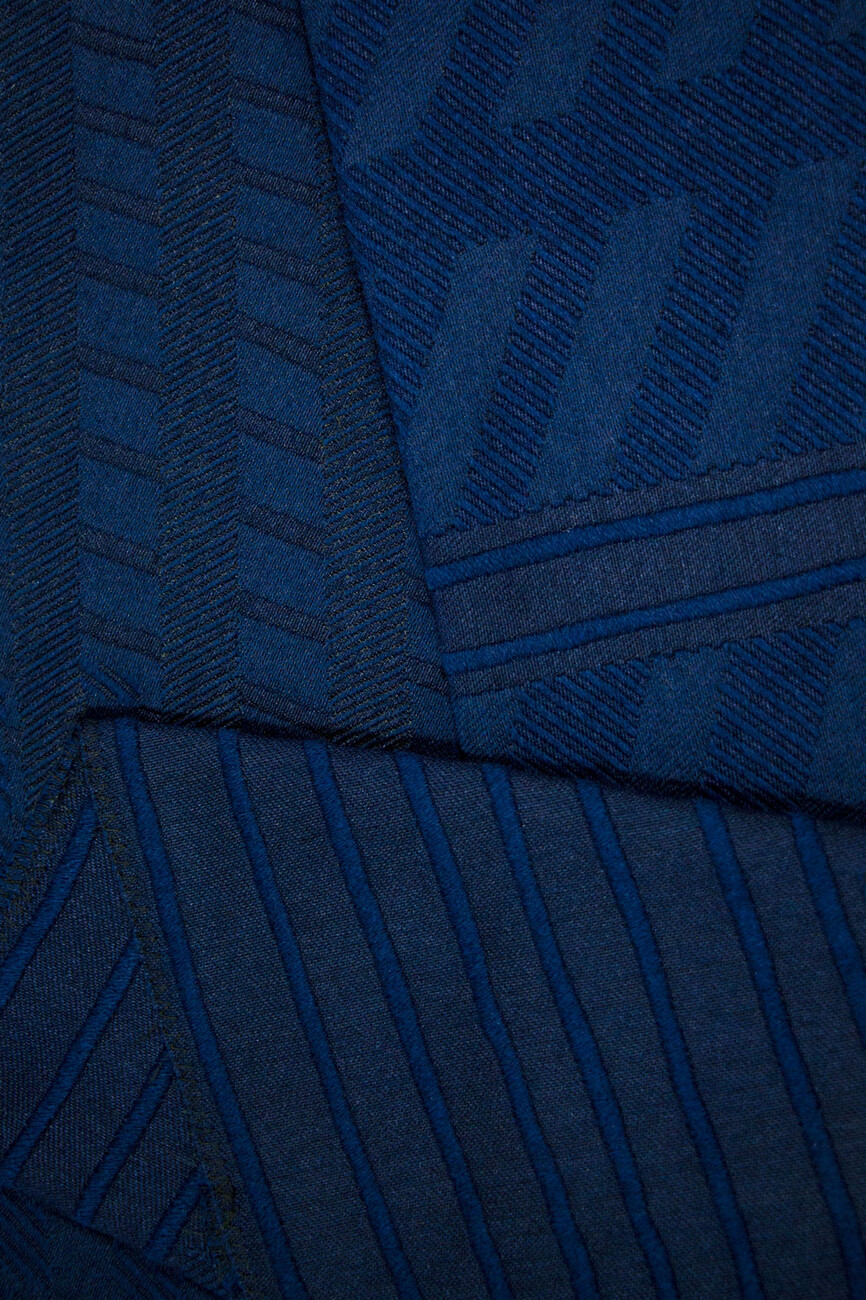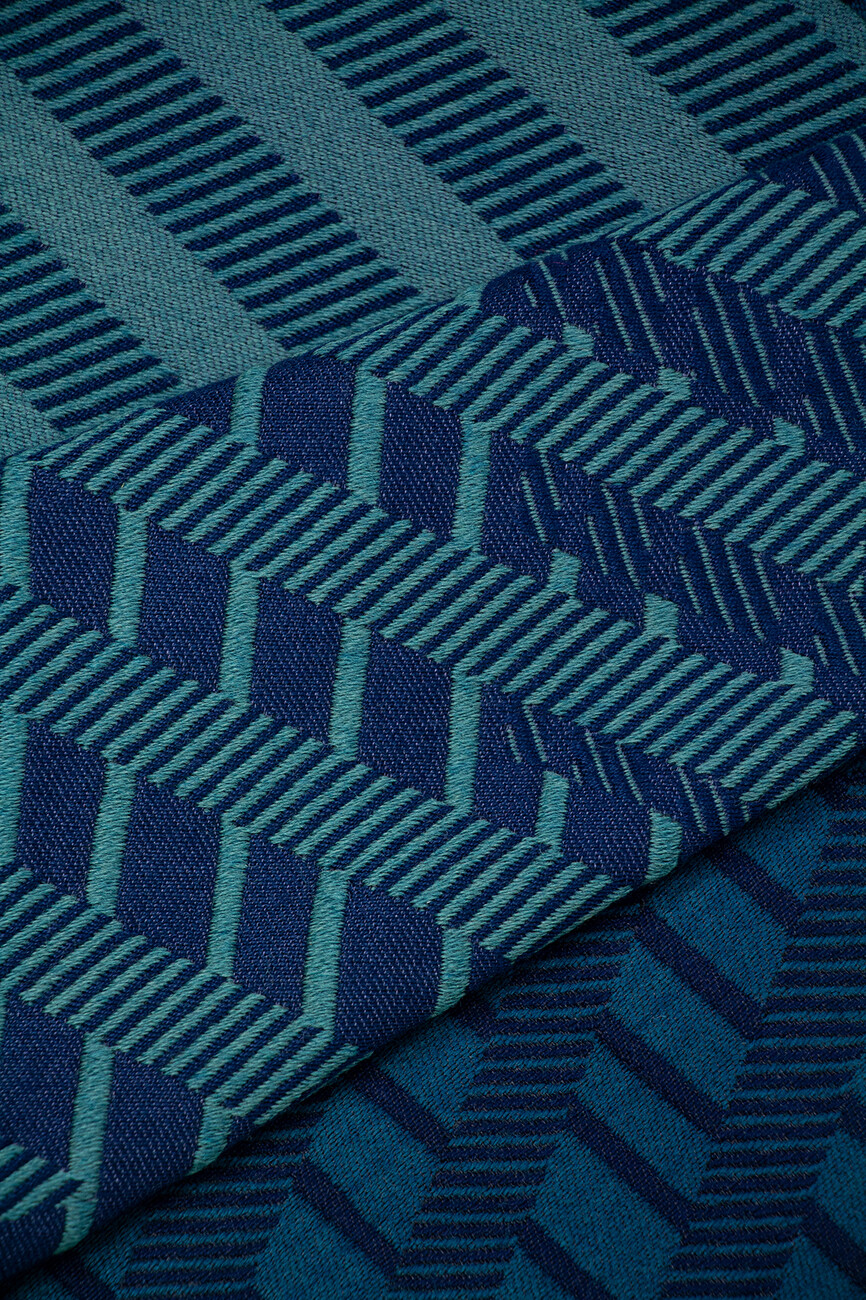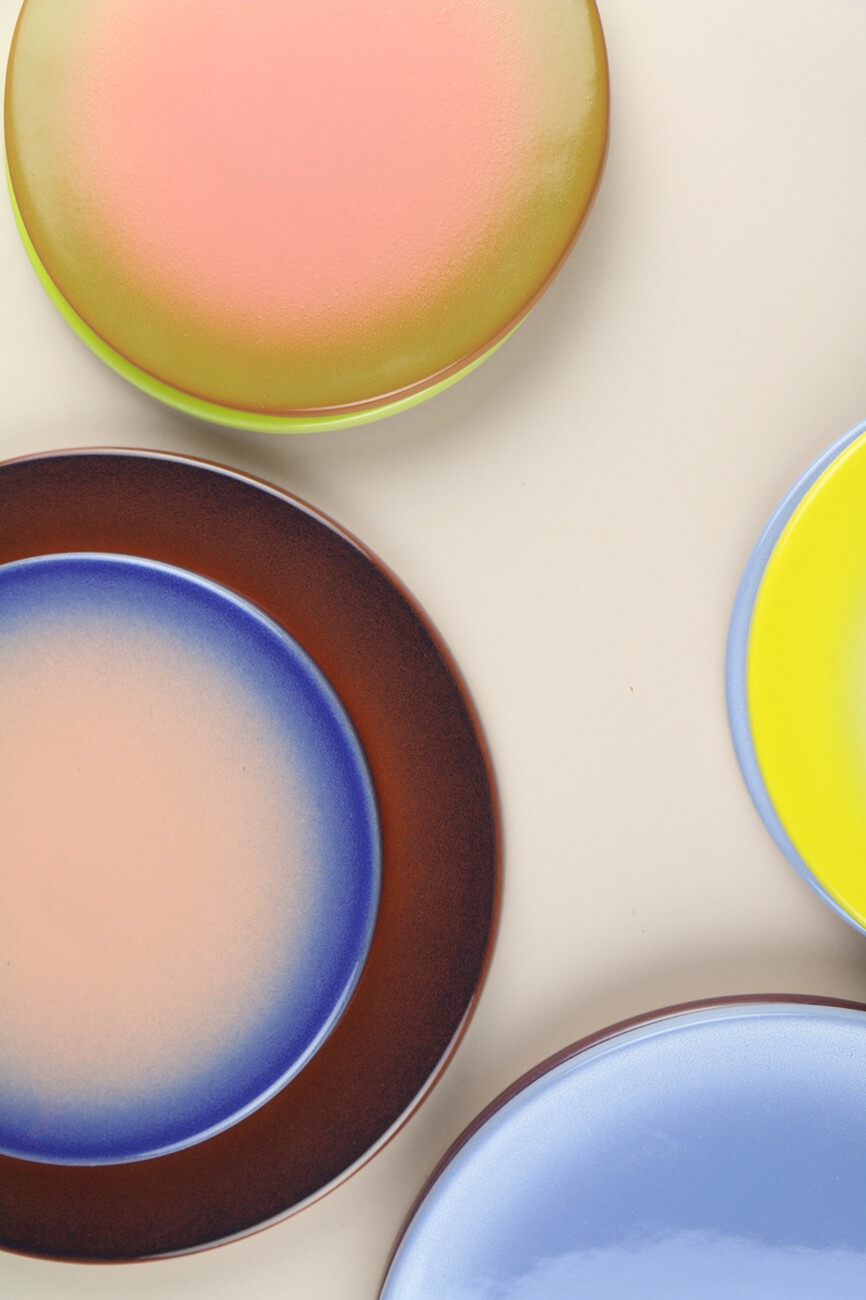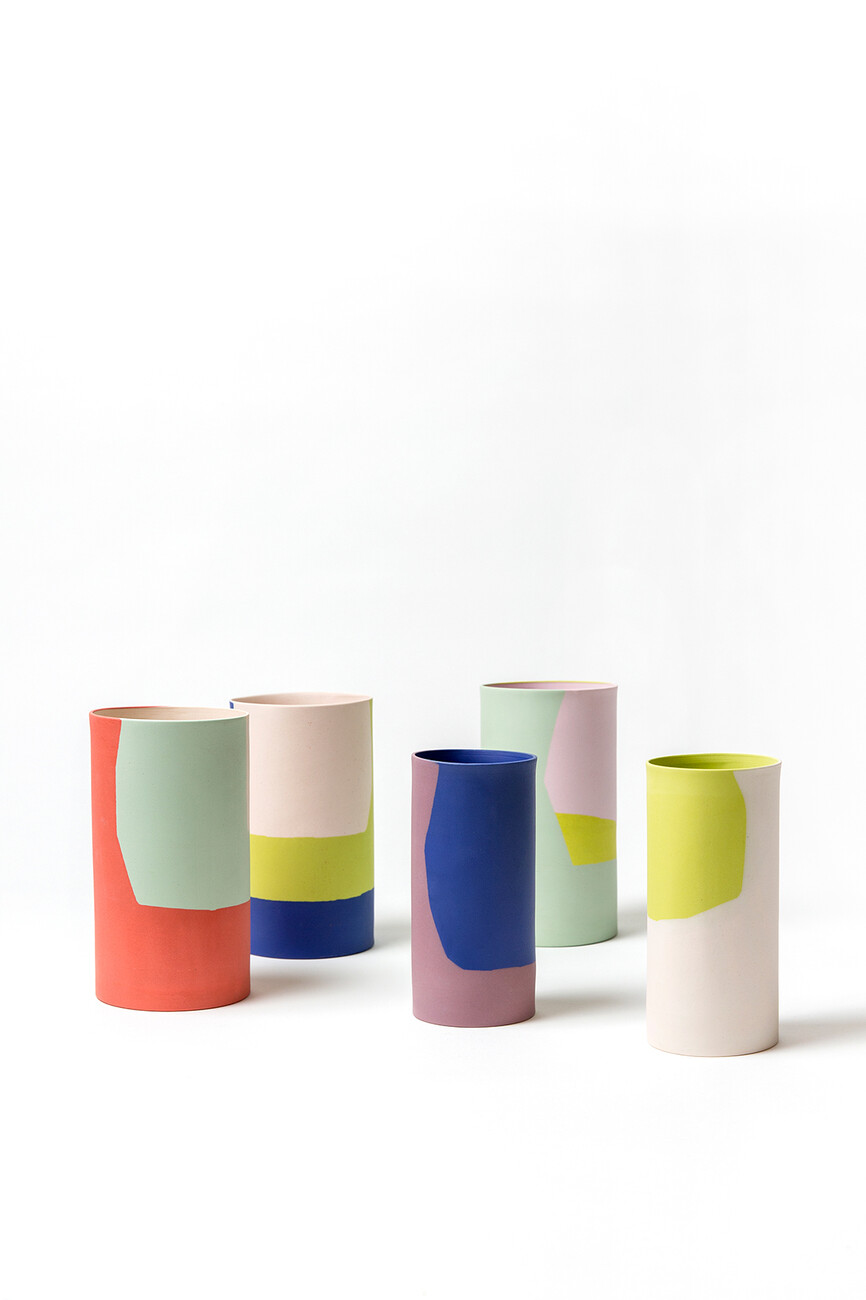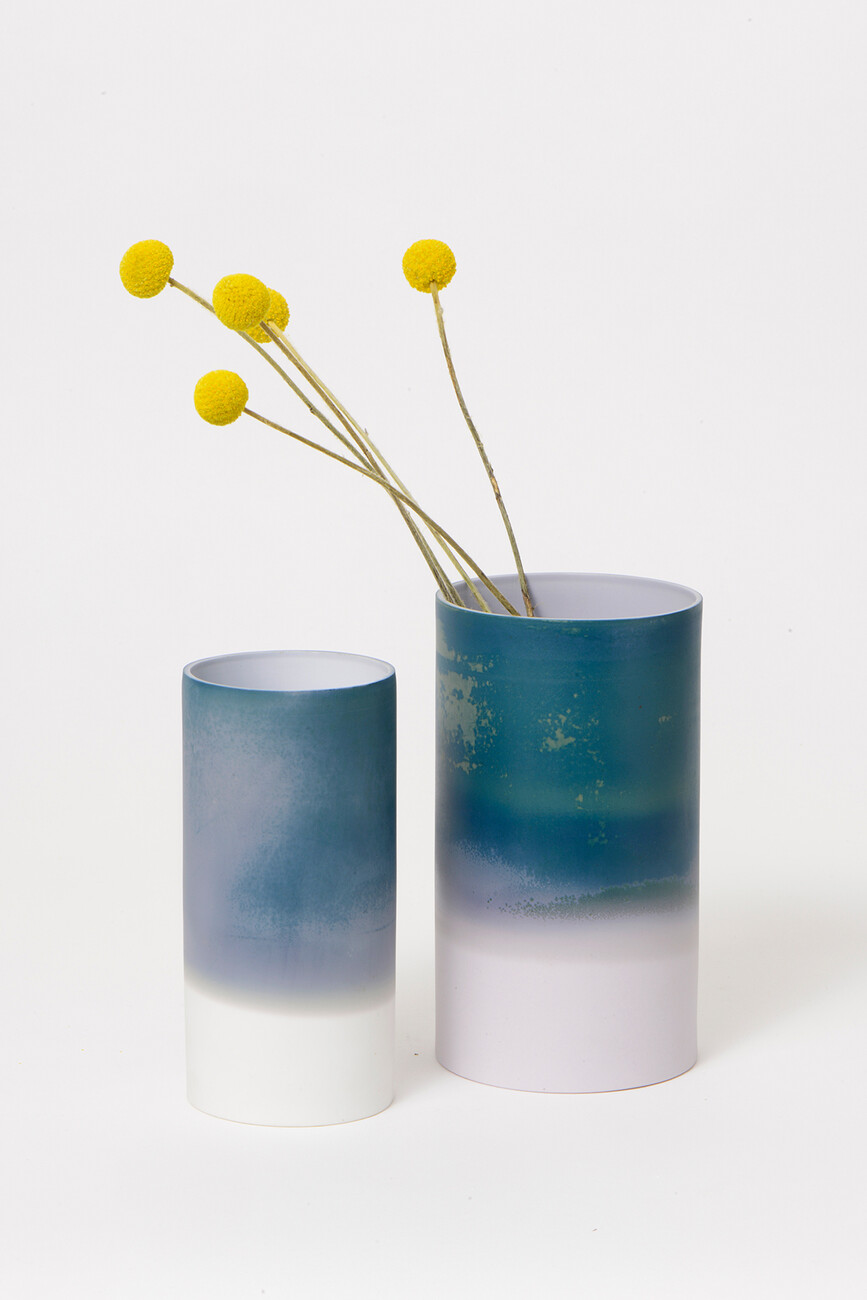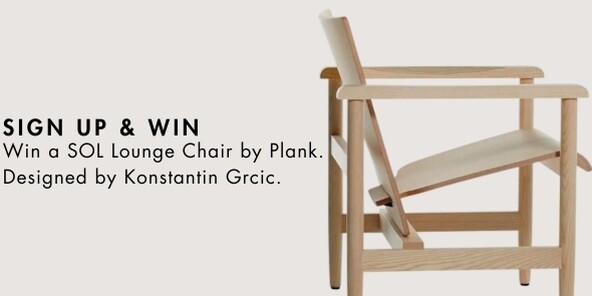Come play
It is a hot summer's day in Germany when Sarah Meyers repeatedly jumps out of the frame during the Zoom conversation – to show new patterns, glazes or fabric samples. Sometimes she pans the laptop around the studio, sometimes she wipes the camera clean with a smile. Meanwhile, Laura Fügmann describes precisely what can be seen: weaves, surfaces, refractions of light. The conversation turns into an intimate exploration of materials. The light dances on the textiles – they are observed, felt, played with. And in the end, it becomes clear: this is not just a place of work. This is a place of research. This is how the conversation with Meyers & Fügmann begins. And it is no coincidence that ‘Come and play!’ sounds almost like a slogan from their studio. This refers to their Berlin studio in Mitte, which is somewhere between a workshop, a laboratory and a cabinet of curiosities – and their attitude, which has become a rare commodity: honest curiosity.
Meyers & Fügmann have become known for projects that go beyond the surface. Their latest coup: a series of curtain fabrics, presented at 3daysofdesign in Copenhagen. Two years in development, a fabric made from recycled polyester, a spherical digital print on heavy cotton and a woven colour gradient inspired by the fading of natural colours in sunlight. They call the artistic research behind it ‘slow patterns’ – fabrics that don't reveal everything at once. Just like the two of them. And like so many things that endure, their story does not begin with a finished pitch, but with an open question. ‘We often work with a toolkit of experiments,’ says Sarah Meyers. ‘But what comes of it is decided in dialogue.’ This can begin with a dye that reacts to light – or with a woven structure that unfolds into a sculptural form. Sometimes their textiles end up as digital prints, sometimes as objects that cannot be assigned to any category. ‘We are sometimes too bold for the classic design market,’ says Laura Fügmann. ‘Too functional for the art world.’
A fluid understanding of design
But it is precisely this middle ground that is their strength. After more than ten years of working together in the studio, the two not only complement each other – they drive each other forward. Laura, the intuitive technician. Sarah, the material-obsessed researcher – who also talks about ‘material porn’. Together, they design objects that do not submit to functionalist dogma, but ask questions: Why does a textile have to remain the same? Why can't ceramics react with the dye? The fact that both were trained at the Berlin-Weissensee Art Academy and the Sandberg Instituut – with stops in surface design, ceramics and glass – is more than a biographical footnote. The transfer from material to material is not a stylistic gimmick, but a method. ‘A textile pattern can also lead to a glaze,’ they say. And what inspires them is not social media or the latest mood board – but the DIY store (Sarah) and colour field painting (Laura). Inspiration as a state of mind, not a trend.
Colour as a field of research
To understand the depth of Meyers & Fügmann's immersion in materials research and colour perception, one should consider two current projects: Komplementärzustände (Complementary States), their installation with Berlin-based colour manufacturer Kolors, and the Frequency fabric collection, created for Kvadrat Residential. In Komplementärzustände, colour is not understood as a static attribute, but as a dynamic interplay of light, structure and perception. Woven swatches and material experiments form a poetic, physical play of colours. Inspired by Josef Albers and Robert Wilson, the loom becomes an instrument for mixing colours – and the textile object becomes a medium between theory and intuition. Her textile research ‘Fades made to fade’, which was presented last year at the Lobe Block in Berlin, takes this even further. The colour gradients unfold over time, visible only in interaction with the sun's rays – a silent, almost meditative transformation. A textile that does not want to be read immediately, but lives. And that poetically blurs the boundaries between decoration and interaction.
‘The exciting thing is that the material thinks along with its surroundings,’ says Sarah. ‘It reacts, it evolves. And that's exactly where its potential lies – for spaces where change is part of the concept.’ Applications range from temporary installations to architectural textiles, from hotel lobbies to curated interiors. The two are currently continuing their research into UV technology with the aim of developing new variants, colour depths and textile behaviours. ‘Why do fabrics have to remain the same shape and colour for twenty years, while the patina of wood and leather is celebrated?’
Cooperation rather than presentation
What particularly sets Meyers & Fügmann apart is their approach to the industry. They see collaborations not as an end point, but as the beginning of an exchange. They don't arrive with finished products, but with materials, sketches and samples. ‘We bring things to show and touch – sometimes even things we can't quite explain ourselves. But you can immediately see what someone is interested in,’ says Sarah. They see enormous potential, especially in companies in German-speaking countries. ‘Many companies have immense knowledge, deep material expertise – and often a great openness to new ideas,’ says Laura. For them, the appeal lies in weaving this wealth of experience into their experimental approaches. Not as a contradiction, but as mutual enrichment – across manufacturing methods, needs and ways of thinking. ‘We like to work with people who can do things we can't,’ they say.
Thanks to their long-standing collaboration with Hella Jongerius and their master's degree studies in Amsterdam, they have a European perspective on design. ‘In the Netherlands and England, the concept of design is approached much more openly,’ says Laura. ‘Here in Germany, we often feel the need to see results. Not processes.’ Yet it is precisely the latter that is important – also in terms of funding. Formats such as the now discontinued Designfarm Berlin scholarship programme, which accompanied studios like theirs through experimental phases, are lacking today. What remains unchanged is the creative energy – and the hope that the understanding of design in Germany will change and grow.
What remains after the conversation with Meyers & Fügmann? The desire to take on a project again myself. But above all, an attitude: that design is not just the beautiful result, but the living process leading up to it. Perhaps it is precisely such positions that are needed for design in Germany to breathe again. Fewer statements, more conversations. And most definitely: more desire to play.
TIPP: On 24 September, the exhibition's closing event takes place of Komplementärzustände by Meyers & Fügmann at the Kolors Space. The exhibition explores colour as a relational system: between materiality and perception, theory and design. Woven swatches, material combinations and sculptural objects reveal how colour continually reconstitutes itself in response to light, structure and context. Komplementärzustände thus proposes an expanded perspective on colour – not as a fixed property, but as a process, a transition, and a dialogue. For the finissage, Meyers & Fügmann will be in conversation with architect Ester Bruzkus about how colour decisions emerge between theory and intuition, and how they shape spatial experience.
Komplementärzustände (Complementary states)
Woven Swatches – exploring Kolors through material
24 September 2025
6 to 9 p.m.
7 p.m. Talk
Kolors Space
Grainauer Straße 11
10777 Berlin
Limited seating. Registration by 17 September 2025 at the latest at: hello(at)favourized.com
